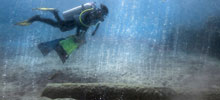Originally published Saturday, May 17, 2014 at 6:37 PM
Scientists to visit Oso slide, but no funds yet for in-depth work
Agencies are seeking money for studies of the Oso landslide disaster and continuing risks along the Stillaguamish, while federal lawmakers press USGS for landslide-hazard analysis.
Seattle Times science reporter
![]()
Two rapid-response teams of experts will head to the Oso landslide this week, but government agencies are still trying to scrape up funding for a more thorough analysis of the disaster and its causes.
Members of the state’s congressional delegation also are trying to shake loose money to expand landslide programs nationwide.
The fieldwork that will start Thursday will be a quick reconnaissance of the slide on a shoestring budget, said University of Washington engineer Joseph Wartman, who is co-leader of one of the projects.
His group’s goal is to gather data and make observations while the slide is still fresh. “If we don’t collect it now, it’s going to disappear,” Wartman said. “The site is already starting to become overgrown a bit.”
The slide struck on March 22, killing 43 people, including two who are still missing.
A group from the University of Illinois also plans to visit the site this week to collect soil samples for laboratory testing, said Illinois engineering professor Tim Stark.
Both teams will be in the field for only a few days, but their work will help lay a foundation for follow-up studies, Wartman said.
“I’m quite certain we’re not going to come to any final conclusion in this short amount of time.”
Wartman’s funding is $10,000, provided by the National Science Foundation (NSF) through the Geotechnical Extreme Events Reconnaissance Association, a group that specializes in quick assessment of earthquakes and other natural disasters.
The money will pay for a flyover of the site and cover travel expenses for six scientists, who are volunteering their time, Wartman said.
Getting a firm handle on the factors that contributed to the slide will require much more extensive field investigations, sampling and drilling, geologists say. That could cost $2 million to $3 million and take several months, said Jonathan Godt, of the U.S. Geological Survey (USGS).
That kind of work wasn’t practical while the recovery effort was under way and the slide was wet and treacherous, said Washington state geologist David Norman, of the Department of Natural Resources (DNR).
Now that the area has stabilized, several agencies — including DNR, USGS, Snohomish County and the Washington Department of Transportation — plan to submit an application for Federal Emergency Management Agency (FEMA) funding this week to cover the more extensive geologic studies.
“We want to get it in and get it approved as quickly as possible, so we can do the work this spring and summer,” Norman said.
But one critic questions whether DNR should be coordinating the work.
The agency oversees timber practices, and there’s a possibility logging contributed to the slide, said environmental lawyer Peter Goldman. DNR could be liable if it made mistakes in regulating logging above the slope, and it might be unwilling to point a finger at itself, he said.
The better option, Goldman said, would be to have a consortium of stakeholders and neutral scientists do the work.
Norman said DNR’s goal is an open, comprehensive and transparent analysis. “We fully appreciate the gravity of this tragedy,” he said, “and will ensure that this investigation is conducted according to the highest standards and that the conclusions and supporting documentation are shared with the public.”
If FEMA agrees to provide the money for study, one of the main questions geologists hope to answer is why the slide traveled so far and so fast — and whether other hillsides along the Stillaguamish River could do the same, Godt said.
“Can this happen elsewhere?” he asked. “For the people living in that area, understanding that hazard is important.”
Though it’s expensive, drilling is the best way to understand the local geology and identify the weak layer that gave way, he explained. Boreholes can also be equipped with sensors that measure moisture, providing a better picture of how water flows through the area.
In the lab, scientists can test soil samples to see what conditions would cause them to slip.
But even with good field data, reconstructing the slide and weighing the factors that caused it will be difficult and require computer models, Godt cautioned. “We can’t put the slide back up on the hill, and we don't know what the conditions were like before the slide because we didn’t have monitoring and instrumentation.”
An easier problem is dating past landslides in the area. Recent laser maps revealed multiple slides along the North Fork of the Stillaguamish, some bigger than the Oso slide. But it’s unclear whether such monsters are extremely rare or more frequent than anyone realized.
University of Washington geomorphologist Alison Duvall is anticipating a $20,000 NSF grant for radiocarbon analysis of organic material swept up when the hillsides collapsed.
Meanwhile, the state’s federal lawmakers are pushing for a bigger budget for landslide mapping and hazard assessments.
Snohomish County’s representatives sent a letter to the House Appropriations Committee last week asking for a $6.5 million bump for USGS’s landslide programs, and a major boost for laser mapping. And in response to questioning from Sen. Maria Cantwell, President Obama’s nominee to head the USGS vowed to provide additional money — though she didn’t say how much.
Staff reporter Mike Baker contributed to this report. Sandi Doughton at: 206-464-2491 or sdoughton@seattletimes.com
 Four weeks for 99 cents of unlimited digital access to The Seattle Times. Try it now!
Four weeks for 99 cents of unlimited digital access to The Seattle Times. Try it now!















